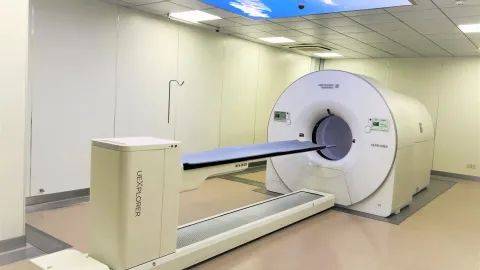Pet Scan Versus Cat Scan: Understanding the Differences for Your Pet's Health
Guide or Summary:Pet ScanCat ScanComparing PET and CT Scans for PetsPet ScanWhen discussing the differences between a PET scan and a CAT scan for pets, it's……
Guide or Summary:
Pet Scan
When discussing the differences between a PET scan and a CAT scan for pets, it's essential to understand what each imaging technique offers and how they are applied in veterinary medicine.
A PET (Positron Emission Tomography) scan is a type of nuclear imaging that provides a detailed view of the body's metabolic processes. It uses a radioactive substance (also known as a tracer) that is absorbed by the body's cells and tissues based on their metabolic activity. The PET scanner then detects the positrons emitted by the tracer, allowing for the visualization of the body's internal structures and functional processes.
PET scans are particularly useful in veterinary medicine for diagnosing conditions that affect the body's metabolic activity, such as cancer, infections, and certain types of inflammation. They can also help in monitoring the effectiveness of treatments over time.

Cat Scan
A CT (Computed Tomography) scan, also known as a cat scan, is another imaging technique used in veterinary medicine. Unlike a PET scan, a CT scan uses X-rays to create detailed cross-sectional images of the body. The CT scanner takes multiple X-ray images from different angles, which are then combined to create a detailed 3D image of the body's internal structures.
CT scans are often used to diagnose conditions that affect the body's structure, such as fractures, tumors, and other abnormalities in the bones and soft tissues. They are also useful for evaluating the size and location of organs and assessing the extent of injuries.
Comparing PET and CT Scans for Pets
While both PET and CT scans are valuable tools in veterinary medicine, they differ in their primary functions and applications.

PET scans are particularly useful for evaluating the body's metabolic activity, making them ideal for diagnosing conditions such as cancer and certain types of infections. They can also help in monitoring the effectiveness of treatments over time.
On the other hand, CT scans are more effective at visualizing the body's structure and are often used to diagnose conditions that affect the bones, soft tissues, and organs. They are particularly useful for evaluating the size and location of tumors, assessing the extent of injuries, and diagnosing conditions such as fractures.
In some cases, a combination of both PET and CT scans may be necessary to obtain a complete picture of the body's health. This can be particularly useful in diagnosing conditions that affect both the body's structure and metabolic activity, such as certain types of cancer.

When deciding whether to use a PET scan or a CT scan for your pet's health, it's essential to consult with a veterinarian. They can provide guidance on which imaging technique is most appropriate for your pet's specific condition and needs.
In conclusion, while both PET and CT scans offer valuable insights into the body's health, they differ in their primary functions and applications. By understanding the differences between these two imaging techniques, pet owners and veterinarians can make informed decisions about which imaging modality is best suited for a particular condition.